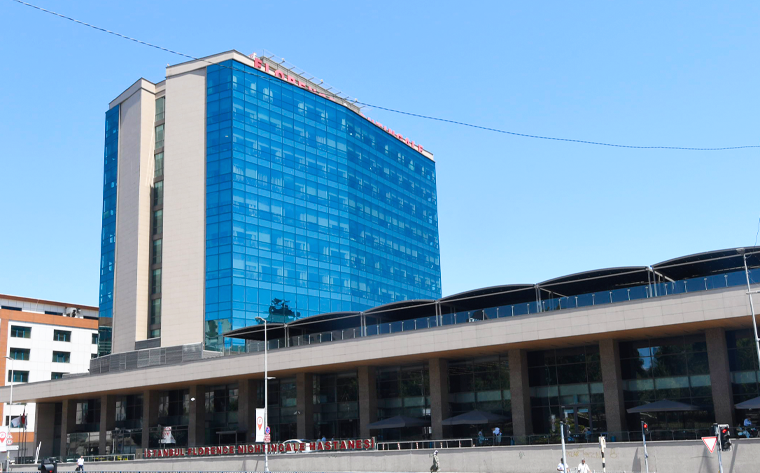
What is Bone Marrow Transplantation? What is Done in a Bone Marrow Center?
Bone marrow transplantation is a complex medical procedure that involves replacing unhealthy cells in the bone marrow with healthy cells. This transplant is used to treat serious diseases, especially cancer. Bone marrow centers are medical facilities specifically designed to perform this procedure and manage the treatment processes of patients. In these centers, patients are constantly monitored and treated by specialist doctors and nurses.
About Bone Marrow Transplant Center
Bone marrow transplant centers are healthcare institutions equipped with advanced technology medical devices and equipment, providing services with a multidisciplinary approach. In these centers, every stage of the patient's bone marrow transplant process is meticulously planned and implemented. In addition, all necessary support services are provided to meet the physical and psychological needs of patients.
What is done at the Bone Marrow Transplant Center?
Bone marrow transplant centers are healthcare institutions that adopt a multidisciplinary approach and meticulously manage every stage of the bone marrow transplant process.
Procedures performed at these centers include:- Patient Evaluation: First, the patients' general health status and the stage of their disease are evaluated. This evaluation is done to determine whether they are suitable for bone marrow transplantation.
- Donor Search and Compatibility Tests: If the patient's own stem cells will not be used, a compatible donor search is initiated. Once the donor is found, tissue compatibility between the patient and the donor is tested.
- Preparatory Treatments: Before the transplant, high doses of chemotherapy or radiotherapy are administered to destroy the patient's existing bone marrow cells. This aims to cleanse the body of unhealthy cells and provide the necessary environment for new stem cells to settle.
- Transplant Process: Healthy stem cells are given to the patient intravenously (through a vein). These cells travel throughout the body and settle in the bone marrow, where they begin producing new, healthy blood cells.
- Follow-up and Support Treatments: After the transplant, since the immune systems of the patients are weak, the necessary treatments are applied to prevent infections and maintain their general health. In addition, patients are checked regularly and possible complications are monitored.
How is Bone Marrow Transplant Performed?
Bone marrow transplantation is performed by transferring healthy stem cells obtained from the bone marrow of the patient or a suitable donor to the patient.
Bone marrow transplantation is performed in the following steps:- Preparation Process: The patient who will receive the transplant is given high doses of chemotherapy or radiotherapy to destroy unhealthy cells in the bone marrow. This process prepares the necessary environment for new stem cells to settle.
- Stem Cell Collection: Stem cells are collected either from the patient himself or from a suitable donor. The collected stem cells are filtered through a special process and prepared for transplantation.
- Stem Cell Transplantation: Healthy stem cells collected are given intravenously to the patient who has completed the preparatory treatment. These cells enter the bloodstream and reach the bone marrow, where they settle and begin to produce new blood cells.
- Recovery and Monitoring: After the transplant, patients are closely monitored. Since their immune systems are weakened, special precautions are taken against the risk of infection. It may take several weeks for the patient's bone marrow function to return to normal and for new blood cells to be produced. During this period, the general health of the patients is constantly monitored and supportive treatments are applied when necessary.
Although bone marrow transplantation is a complex procedure used in the treatment of serious diseases, it has high success rates thanks to the opportunities provided by modern medicine.
When is Bone Marrow Transplant Performed?
Bone marrow transplantation is often used to treat serious conditions such as blood cancers (leukemia, lymphoma), bone marrow failure (aplastic anemia), and some genetic diseases. The timing of the transplant is determined by the patient's general health, the stage of the disease, and other medical factors. The treatment team aims to increase the patient's chances of recovery by planning the transplant timing in the most appropriate way.
What Tests and Procedures Are Performed at the Bone Marrow Transplant Center?
In bone marrow transplant centers, a series of medical tests and procedures are performed to ensure the successful completion of the transplant process. These include blood tests, tissue compatibility tests, bone marrow biopsy and imaging techniques. In addition, a multidisciplinary approach is adopted to evaluate the general health status of patients and to best prepare them for the transplant process.
Which Diseases Can Be Treated with Bone Marrow Transplantation?
Bone marrow transplantation is used as an effective method in the treatment of cancers and some other serious diseases. This transplantation replaces diseased or poorly functioning bone marrow by transferring healthy stem cells to the patient.
Diseases that can be treated with bone marrow transplantation include:
Bone marrow transplantation can play a life-saving role in the treatment of these serious diseases. The success of the transplant depends on factors such as the type of disease, the patient's general health, and the availability of a suitable donor.


